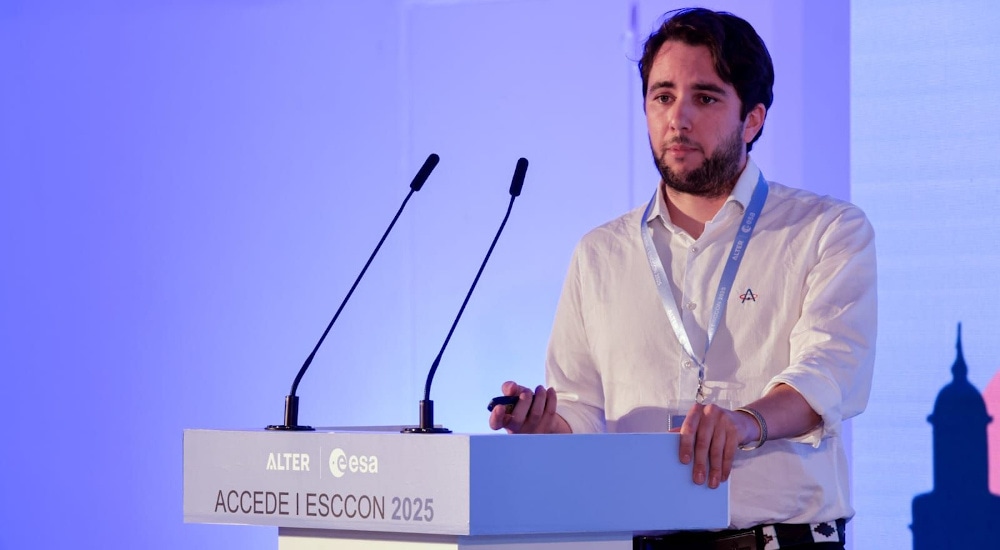Alén Space presents the results of ESA-driven HALT project
March 26, 2025

From March 25 to 27, 2025, Seville is hosting the joint edition of ACCEDE and ESCCON, two major European events dedicated to the use of EEE (electrical, electronic, and electromechanical) components in space applications. As part of this congress, Alén Space presented on Tuesday, March 25, the results of the testing campaign supported by the European Space Agency (ESA) to verify whether the HALT (Highly Accelerated Life Test) method is an optimal system for validating the use of commercial off-the-shelf (COTS) electronics components in space missions. This project, led by Alter Technology, involved the participation of Alén Space and the Advanced Center for Aerospace Technologies (CATEC).
In the presentation, co-founder and Electronics Area Manager at Alén Space, Aarón Nercellas, provided a detailed overview of the experience and conclusions drawn from the HALT testing conducted on TOTEM, Alén Space’s software-defined radio (SDR), with flight heritage (TRL 9) and specifically designed for space missions with small satellites.
Performance testing under extreme conditions
This initiative went beyond traditional testing methods. Its purpose was to subject the hardware to conditions far beyond its operational limits. For instance, equipment was tested in freezing conditions down to -65°C, temperature elevations up to +120°C, vibrations of up to 22.5 gRMS, and Total Ionizing Dose (TID) tests for exposure to ionizing radiation with a Cobalt-60 source and accumulated doses up to 20 krad.
The goal was to evaluate failure modes, identify environmental performance margins of the components, detect weaknesses and potential improvements, optimize reliability, and accelerate product design evolution.
Among the most significant findings of this project were:
- Diversity of failure types: Some components failed destructively, while others exhibited intermittent failures or recovered functionality once stress conditions were removed.
- Real value of agile testing: HALT allowed for testing cycles: test > failure > analysis > repair > test again. This iterative approach favoured greater adaptability, review of test ranges, and identification of new failure modes under controlled conditions. However, due to the limited number of samples used, it was also inefficient in terms of test setups and facilities.
- Importance of data analysis: The tests highlighted the importance of improving data acquisition and telemetry systems. The origin of certain failures was not always obvious, and some anomalies could not be replicated under laboratory conditions. This information is critical for anticipating potential degradation trends in operational environments.
Reliability as a priority in New Space
One of the most significant conclusions of the test relates to the balance between agility and robustness in New Space missions. While the use of COTS components reduces costs and accelerates development cycles, ensuring reliability remains an essential requirement.
The HALT campaign demonstrated the value of combining accelerated testing strategies with targeted improvements in design. It also emphasized the usefulness of adopting a hybrid approach in small satellite development: incorporating space-validated components, when necessary, without sacrificing the flexibility and speed characteristic of the New Space sector.
These findings will also contribute to improving the products developed by Alén Space, according to Aarón Nercellas. “Our experience with the HALT project couldn’t be more satisfactory. The goal is to identify failure modes to learn and enhance the product through design and/or the selection of new components,” explains the Electronics Area Manager at Alén Space. “Space missions using COTS under the agile methodologies of New Space require increasing reliability. It’s no longer about technology demonstrators but about constellations that provide services and returns to the companies behind them. Understanding the limits of these technologies allows us to improve our products with the goal of delivering more robust and long-lasting missions.”
Featured image: Alter Technology
